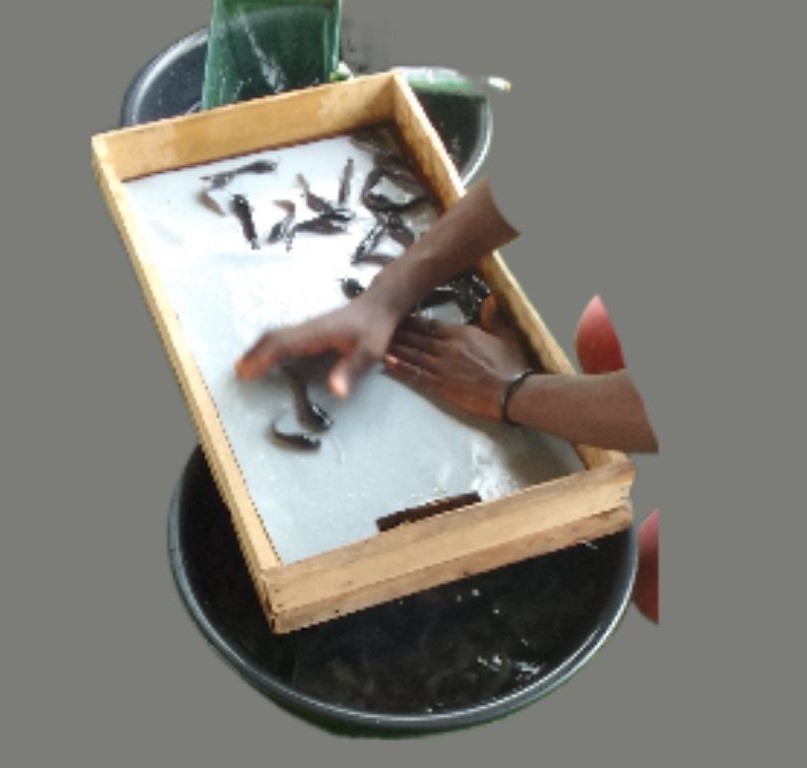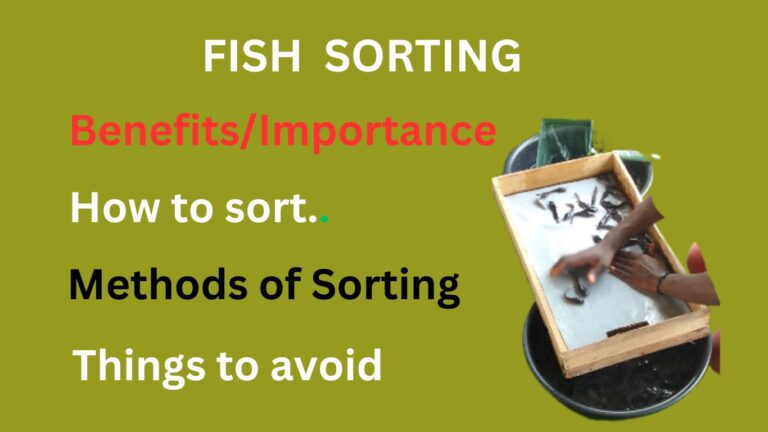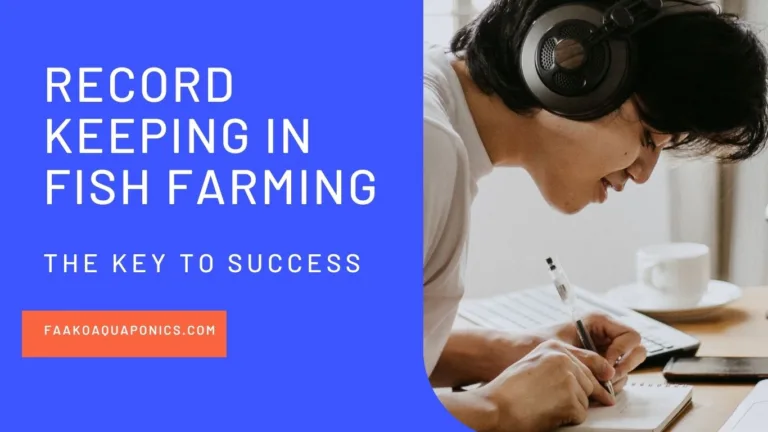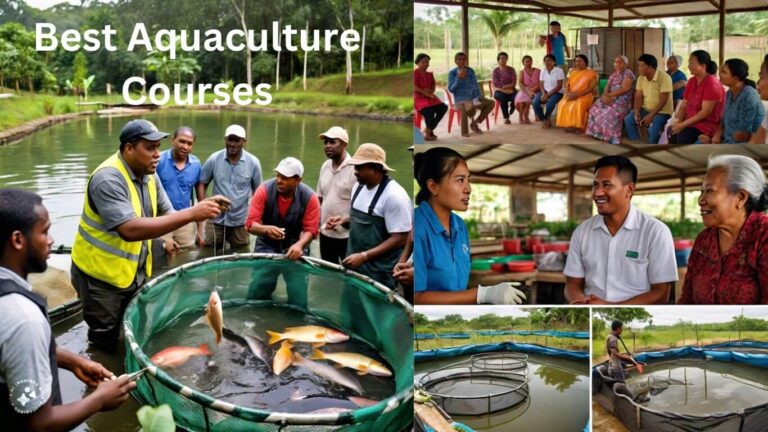How To Sort Fish is a crucial aspect of fishery management, often going unnoticed despite its significant impact on the health of aquatic ecosystems and the efficiency of fishing operations. Whether you’re a commercial fisherman, a hobbyist, or a conservationist, understanding the importance of fish sorting and how to sort fish can enhance your experience and contribute to sustainable fishing practices.
In this comprehensive guide, we’ll delve into the importance of fish sorting, its benefits, the best times, methods, and intervals for sorting, how to sort fish, and the challenges that come with it.
What is Fish Sorting?
Fish Sorting is the process of selecting fish according to sizes, species, color, and diseased or diseased-free into the same pond. Most fish types, (Especially Catfish) grow into different sizes despite they all being hatched at the same time, being in the same pond, and getting the same care. So sorting them helps as a fish farmer.
Why Fish Sorting Is Important?
Fish sorting involves separating fish based on species, size, color, or quality. This process is essential for various reasons as outlined below.
Sustainable Fisheries Management
Sorting enables fishermen to comply with regulations, such as size limits and catch quotas, promoting sustainable fishing practices.
Healthy Fish
Removing non-target species or undersized fish helps maintain the balance of aquatic ecosystems, preventing overpopulation and ecosystem disruption. Also, some diseases are spread in the pond when one fish is infected therefore separating the sick ones from the healthy ones prevents the diseases from spreading across the pond.
Economic Efficiency
Sorting allows fishermen to focus on catching target species of optimal size and quality, maximizing the value of their catch. Since they are not all the same size, sorting the fish helps to harvest the target market size. When you sort the fish and start harvesting the bigger ones, before you finish them the other ones may also grow. This will maximize your profit as a farmer since most of them are measured in kilograms so the bigger the size, the more the weight.
Higher Quality Catch
By separating fish based on size and quality, fishermen can ensure that only the best specimens are retained, leading to higher prices in the market since the fish will be in bigger sizes.
Reduced Bycatch
Bycatch is a situation where untargeted or unwanted fish is harvested unintentionally. Proper sorting minimizes the accidental capture of non-target species, reducing waste and preserving biodiversity.
Compliance with Regulations
Adhering to sorting regulations helps fishermen avoid fines and penalties while contributing to the conservation of fish stocks.
Improved Sustainability
Responsible sorting practices support the long-term health of fish populations and ecosystems, ensuring a sustainable resource for future generations. This makes the farmer continue having the fish on the farm. This happens when you sort and harvest the bigger ones while allowing the smaller ones also to grow.
Uniformity of Fish
Fish sorting ensures that the fish in the pond are of the same size which reduces the feed ratio therefore making all the fish get the feed as required. When fish is not sorted, the bigger and more active ones always eat more of the feed than the smaller ones making them grow bigger at the expense of the smaller ones.
Reduces cannibalism
Cannibalism is very high in some fish types like catfish. Cannibalism is the process of attacking and consuming other species of fish. Some of the fish like catfish are very violent and often use each other as food when hungry.
They often attack the weaker, smaller, and sick ones and use them as food. So when proper sorting is done, it reduces the rate at which they attack and consume each other.
When is the Best Time for Sorting
The timing of fish sorting depends on various factors, including;
Location
Sorting practices may vary depending on the geographical region and the specific characteristics of the fishery.
Season
Certain seasons may be more conducive to sorting, depending on the behavior and migration patterns of target species.
Weather Conditions
Weather can influence fish behavior and distribution, affecting the timing and effectiveness of sorting efforts. In regions where the weather conditions are hot, is good to do it early in the morning to avoid exposing the fish to direct sunlight. And when the weather is very cool too, you do it at a relatively hot time
Fishing Method
Different fishing methods, such as trawling, longlining, net casting, scooping, or angling, may require sorting at different stages of the fishing process.
Intervals for Effective Sorting
Determining the frequency of fish sorting involves balancing efficiency with sustainability:
Continuous Sorting
Some fishing operations require continuous sorting to ensure that only the desired species are retained while minimizing bycatch.
Periodic Sorting
In other cases, periodic sorting at regular intervals may be more practical, allowing fishermen to manage their catch more effectively without interrupting fishing operations. While others do it every three to four weeks, others do it every month, and others do it every three months, it all depends on you as a farmer.
Real-Time Monitoring
You can always check and monitor your fish from time to time to see when the sizes vary. Advances in technology, such as onboard sensors and video monitoring systems, enable real-time assessment of catch composition, facilitating more efficient sorting practices.
How Do You Sort Fish?
There are different ways of sorting your fish depending on the type of aquaculture but I am using the Pond Aquaculture as a case study.
- Drain the water in the pond out leaving just a small amount to keep the fish while you fetch them
- Disinfect all the equipment that will be used with an iodine-based solution or salt in short before using them
- Be fetching the fish small onto a sorting table or container depending on what you want to use using a scooping net.
- Pick them into containers containing water based on sizes, species, colors, or whichever way you intend to sort them.
- Careful take them back into different ponds after you disinfected or salt bathed and filled the ponds with water.

sorting fish in a pond

Scooping Net
Things to Avoid Before, During, and After Sorting Fish
- Don’t feed the fish before sorting and immediately after sorting because they will be stressed and that may affect them.
- Don’t sort the fish when the weather is hot
- Sort them as quickly as possible to avoid stressing them for a long time
- In the containers you are to keep, make sure are spacious enough otherwise they will injure each other
- Add salt into the Pond after sorting to release the stress. Or any antibiotics
Challenges in Fish Sorting
Despite its importance, fish sorting poses several challenges:
Labor Intensity
Sorting can be labor-intensive, particularly in large-scale commercial fisheries where sorting needs to be done quickly and efficiently.
Species Identification
Identifying and distinguishing between different fish species and sizes accurately can be challenging, especially for less experienced fishermen or in cases where species exhibit similar characteristics.
Size Variation
Fish of the same species can vary significantly in size, requiring careful sorting to comply with size regulations and market preferences.
Handling Stress
Fish handling during sorting can cause stress and injury, potentially affecting the quality and survival of the catch. You are likely to lose some fish after sorting due to injuries and stress
Equipment Limitations
Inadequate sorting equipment or infrastructure can hinder sorting efficiency and accuracy, leading to increased costs and reduced profitability.
Overcoming Fish Sorting Challenges
Addressing these challenges requires a combination of technology, training, and strategic planning:
Invest in Training
Providing fishermen with training in species identification, sorting techniques, and handling practices can improve efficiency and reduce errors. To succeed in the fish farming business, you need to keep learning and improving your skills.
Utilize Technology
Adopting advanced sorting technologies, such as underwater cameras, automated sorting systems, and data analytics, can streamline the sorting process and enhance accuracy.
Improve Infrastructure
Upgrading sorting facilities and equipment, such as sorting tables, conveyor belts, and sorting bins, can improve workflow and reduce manual labor.
Collaborate with Stakeholders
Engaging stakeholders, including fishermen, regulators, scientists, and conservation groups, can foster collaboration and consensus on sorting practices and regulations
Tools and Techniques for Fish Sorting
Several tools and techniques are available to facilitate efficient fish sorting:
Grading Screens
The Grading Screens with different mesh sizes can separate fish based on size, allowing undersized or unwanted fish to pass through while retaining target species.
Sorting Tables/Board
Sorting tables provide a platform for manual sorting, allowing fishermen to inspect and categorize fish based on species, size, or quality. It is the legs of the table which differentiate it from the board.

Electronic Monitoring
Electronic monitoring systems, including onboard cameras and sensors, can automatically record and analyze catch composition, facilitating real-time sorting decisions.
Selective Fishing Gear
Selective fishing gear, such as escape panels and bycatch reduction devices, can help minimize bycatch and facilitate species-specific sorting.
Conclusion
Fish sorting plays a critical role in sustainable fisheries management, conservation efforts, and the economic viability of fishing operations. By understanding the importance of fish sorting, embracing efficient sorting practices, and overcoming challenges through innovation and collaboration, we can ensure a bright future for aquatic ecosystems and the communities that depend on them.
Whether you’re a seasoned fisherman or a concerned citizen, your efforts in promoting responsible fish sorting contribute to the health and resilience of our oceans and freshwater habitats. Together, let’s strive for a future where fish sorting is not just a necessity but a cornerstone of sustainable fisheries and thriving aquatic ecosystems.





